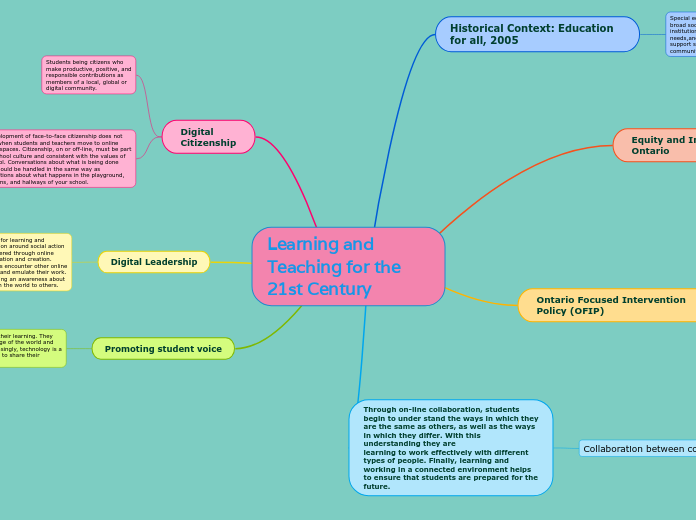Learning and Teaching for the 21st Century
Promoting student voice
Students want to have a voice in their learning. They
want to contribute to the knowledge of the world and
provide their per spectives. Increasingly, technology is a
means by which students are able to share their
thinking and creations.
Digital Leadership
Passion for learning and
motivation around social action
are fostered through online
collaboration and creation.
Students encounter other online
leaders and emulate their work.
They bring an awareness about
issues in the world to others.
Digital Citizenship
The development of face-to-face citizenship does not
change when students and teachers move to online
learning spaces. Citizenship, on or off-line, must be part
of the school culture and consistent with the values of
the school. Conversations about what is being done
online should be handled in the same way as
conversations about what happens in the playground,
classrooms, and hallways of your school.
TIPS AND STRATEGIES FROM SYSTEM LEADERS
Digital Citizenship needs to become part of the school
culture-not just a class once a week with a different
focus; addressing it in everyday life at school will help
produce a ‘shift in thinking’ and rethinking of roles
Set clear expectations around the responsible use of
technology and address inappropriate use every time
Develop an implementation plan and include
professional development for teachers and parents as
an integral part of the plan
Connect the teaching of digital citizenship to what is
already part of your board plan (e.g. character
education, school codes of conduct) to allow for ease
of implementation
Promote collaboration between IT and Curriculum
departments and discuss the digital citizenship
connections.
Students being citizens who
make productive, positive, and
responsible contributions as
members of a local, global or
digital community.
Through on-line collaboration, students begin to under stand the ways in which they are the same as others, as well as the ways in which they differ. With this understanding they are
learning to work effectively with different types of people. Finally, learning and working in a connected environment helps to ensure that students are prepared for the future.
Collaboration between communities
Ontario Focused Intervention Policy (OFIP)
-Ensure equity of outcomes for all students across the province
-Provide support for low-performing schools
-Strengthen and support instructional leadership
and classroom practices for implementing precise
interventions
Equity and Inclusive Education in Ontario
DIVERSITY: The presence of a wide range of human qualities
and attributes within a group, organization, or society. The
dimensions of diversity include, but are not limited to, ancestry,culture, ethnicity, gender, gender identity, language, physical and intellectual ability, race, religion, sex, sexual orientation, and socio-economic status.
EQUITY: A condition or state of fair, inclusive, and respectful
treatment of all people. Equity does not mean treating people
the same without regard for individual differences.
INCLUSIVE EDUCATION: Education that is based on the
principles of acceptance and inclusion of all students. Students
see themselves reflected in their curriculum, their physical
surroundings, and the broader environment, in which diversity
is honoured and all individuals are respected.
Goals: -all students, parents, and other members of the school
community are welcomed and respected
-every student is supported and inspired to succeed in a culture of high expectations for learning.
Historical Context: Education for all, 2005
Special education in Ontario has evolved in the context of a broad social movement advocating the closure of residential institutions, which had housed many persons with special needs,and the inclusion of these persons, with appropriate support services, as fully as possible, in the life of the community.
It was not until 1980 that Ontario’s Education Amendment Act, also known as Bill 82, required Ontario school boards to
provide special education programs and services for all students with special education needs.
Regulation 181, enacted in 1998, legislated the requirement that the first consideration
regarding placement for an “exceptional pupil” be placement in a regular class with appropriate
supports, when such placement meets the student’s needs and is in accordance with parents’
wishes. Ministry policy requires that a range of options continue to be available for students
whose needs cannot be met within the regular classroom

